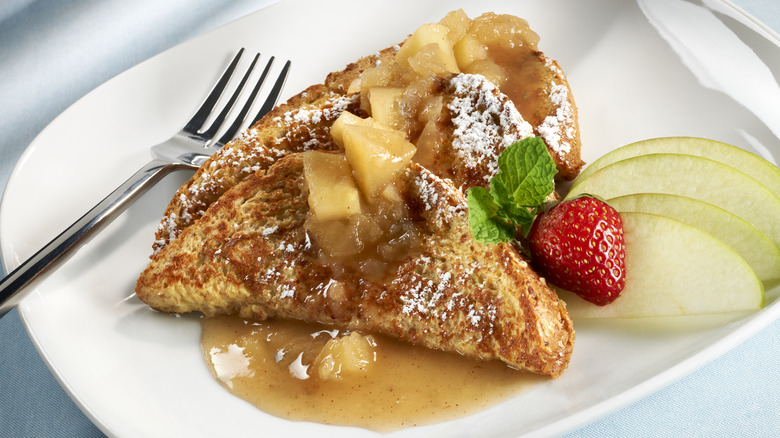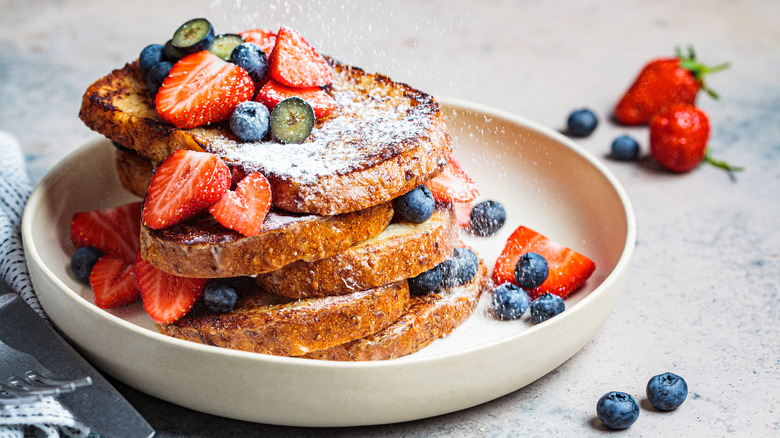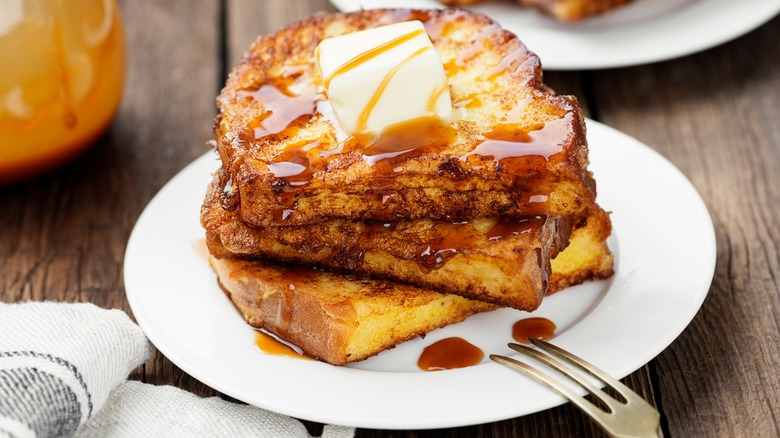Sheet Pan French Toast Saves The Day For A Low Maintenance Breakfast
As with bread pudding, making french toast is a clever way to use up old bread. Typically, the process involves soaking pieces of too-dry bread in a sweet custard mixture before cooking it on the stove. The result is delectably custardy bread with crisp edges, but it is not without its drawbacks: The amount of deliciousness seems equal to the effort you have to put into it. Frying pieces of toast one by one in the skillet doesn't allow for mass production, meaning anyone who wants a slice will have to wait for the cook to fry up the french toast in batches. This means a lot of work over the stove and little time for the cook to enjoy themselves.
Thankfully, there is a way for home chefs to take most of the work out of this popular breakfast treat. Instead of toiling over a hot stove, take an easier route and bake your french toast in the oven with a sheet pan. This method removes the need for a skillet and makes it easier to serve more french toast at a time for a larger crowd — and in less time.
What kind of bread to use for sheet pan french toast
French toast lives and dies by its primary ingredient: bread. Choose the wrong kind, and your toast may not have the right consistency to absorb the eggy custard the dish is known for.
Staying authentic to the dish's origins, choosing French-style brioche bread for french toast is a solid choice. One of the benefits of this type of bread is how dry it becomes after just a day or so on the countertop. Dry bread is instrumental for proper French toast because it absorbs the custard without becoming oversaturated with liquid (and therefore soggy). If your bread isn't stale enough, just leave it out on the counter overnight so it can dry out and be ready to absorb the liquid in the morning.
Challah is also an excellent choice for french toast because of its slightly sweet, eggy flavor that perfectly complements the custard. Challah also has tight crumb, meaning it lacks big air bubbles and does a great job at absorbing (and retaining) the custard during the cooking process. Once this integral bread decision is made, it is that much easier to make your dreams of successful sheet pan french toast come true.
More tips for great sheet pan french toast
When you have your assembly line in place, making the dish on a sheet pan can shave a lot of time off of cooking, be it sweet or savory French toast. The first few steps will essentially be the same as your typical french toast recipe — slicing the bread, whisking the custard, and coating the slices evenly. The one aspect you will have to take into consideration is that baking french toast in the oven instead of frying it on the stove may change the surface texture. However, there are a few ways to ensure your sheet pan french toast gets crispy edges.
First, add your sheet pan to the oven while it preheats. When it's hot enough, add some pats of butter to the pan and, once it melts, a sprinkling of sugar, followed by your custardy pieces of bread. Once the toast starts to cook in the hot butter, the sugar will caramelize and crisp up the edges. To take things to another level, once your french toast has finished baking, turn on the broiler for a few minutes. This technique will give the bread a nice brown color on top, so no one will guess you made your french toast without a frying pan.


